Herman Hesse: German Novelist, Poet, Mentor for Spiritual Seekers
July 2, 1877, Calw, Wuertenburg, Germany, 6:30 PM, LMT.
(Source: Time stated in mother’s diary.) Died, August 9, 1962, Montagnola.

(Ascendant in Sagittarius with Jupiter rising in the same sign; MC, Libra; Sun and Venus in Cancer; Moon loosely conjunct Saturn in Pisces, with Mars also in Pisces; NN in Pisces; Mercury in Gemini; Uranus in Leo; Neptune and Pluto in Taurus.)
 Hermann Hesse was one of the leading psycho-spiritual authors of the twentieth century. For more than half a century (1905-1962) his novels inspired those who sought truth and a deeper sense of their spiritual identity – especially the young. Many of his novels are largely autobiographical, drawn from his life of frequent psychological crisis and suffering, and his progressive understanding of the dynamics of the psyche. His constant bouts with depression, alcoholism and his sometime suicidal nature compelled him to seek the aid of two outstanding psychologists – C.G. Jung and J.B. Lang, with whom he shortly developed a deep and abiding friendship. His experience in prolonged therapy afforded him a profound knowledge of the psyche that found expression in his increasingly psychoanalytic and symbolic novels.
Hermann Hesse was one of the leading psycho-spiritual authors of the twentieth century. For more than half a century (1905-1962) his novels inspired those who sought truth and a deeper sense of their spiritual identity – especially the young. Many of his novels are largely autobiographical, drawn from his life of frequent psychological crisis and suffering, and his progressive understanding of the dynamics of the psyche. His constant bouts with depression, alcoholism and his sometime suicidal nature compelled him to seek the aid of two outstanding psychologists – C.G. Jung and J.B. Lang, with whom he shortly developed a deep and abiding friendship. His experience in prolonged therapy afforded him a profound knowledge of the psyche that found expression in his increasingly psychoanalytic and symbolic novels.
A number of themes recur in Hesse’s work; the spiritual loneliness of the artist and his estrangement from the modern world; the duality of human nature; the need for man to free himself from the established patterns of culture and civilization in order to discover and live true to his deeper spiritual nature; the value of Eastern Mysticism in the achievement of Self-realization. Hesse’s later works reveal his deepening interest in Jungian concepts of introversion and extroversion, the collective unconscious, idealism, and symbols.
Among Hesse’s better known works are Demian (1919), which made him famous in Germany, Siddhartha (1922, tr. 1951), an imaginative account based on the early life of the Buddha, Der Steppenwolf (1927, tr. 1929, 1963), Narziss und Goldmund (1930, tr. Death and the Lover, 1932; Narcissus and Goldmund, 1968) and Das Glasperlenspiel (1943, tr. The Glass Bead Game, 1970) Hermann Hesse received the Nobel Prize for Literature in 1946.
Significant Rays in Hesse’s Energy System and some Astrological Correlations with these Rays
The Second Ray of Love-Wisdom: It is probable that the second ray is the Hesse’s soul ray. Beneath his agonizing and artistically-fruitful psychological troubles, one senses an incessant search for the wisdom which releases, for the understanding which restores a human being to his essence. Certain of his novels are written largely on the fourth ray of “Harmony through Conflict”, but three, in particular, sound a note of transcendence of the agony of human dualism, and the resolution which arises through unified spiritual understanding. These novels are: Journey to the East, Siddhartha, and The Glass Bead Game, or Magister Ludi. The protagonist of the last novel, The Glass Bead Game, is clearly an advanced initiate of the Pythagorean mould – a man who understands the world through a developed “pure reason” – in the occult sense.
The second and fourth rays, are notably, rays of suffering (following by the transcendence of suffering through beauty, wisdom and love). The struggles of the fourth ray are proverbial, and of the individual on the second ray, it is said that he is possessed by the tendency to “…agonise towards the goal, carrying the burden of the world, learning – through identification with others – a detachment which, as time proceeds, negates all pain.” (DINA I 149) Hesse’s path, therefore, was the path of sensitivity agony and suffering leading to redemption and release.
Hesse was largely a product of German Culture with its fourth ray soul, though his father was of Russian descent, and from the time he was forty-two, Switzerland was his country of choice, and later home. Given the themes of a number of his novels (duality and conflict), one might be tempted to think of him as a fourth ray soul, except for the persistently underlying themes of wisdom and enlightenment which seem still more fundamental beneath the fray. It is as if the struggles of the fourth ray were meant to lead to the realizations of the second. If a subray for the soul were to be hypothesized, one could very reasonably justify the fourth.
Second Ray Conduits into the Astrological Chart
Two of the three signs/constellations which transmit the second ray are prominent in Hesse’s chart – Gemini and Pisces. Gemini holds a vitally important angular Mercury, and Pisces holds Mars, Saturn and the Moon (orthodox ruler of his Cancer Sun Sign) as well as the asteroid Vesta and the North Node – clearly a very heavy concentration of astrological factors). As well, the primary second ray planet, Jupiter, rises in its own sign Sagittarius, conferring an incessant urge towards the expansion of consciousness (a predominating second ray theme). The sextile of Neptune to the Cancerian Sun (of which it is esoteric ruler) and the trine from Venus in Cancer to the Pisces Moon should not be ignored for their possibility of transmitting the second ray to and through the emotional vehicle.
The Fourth Ray of Harmony through Conflict: Even a superficial study of Hesse’s life and impact will reveal the potency of this ray of artistry and struggle. It is probable that the fourth ray was the ray of his troubled, struggling personality and probably of his lower mind as well. The greater part of his quite long life was spent in the throes of conflict, with which he sought to come to terms using all his psychological insight and artistic sensitivity. He was a man “caught between”, as it were, (the undiscovered planet, Pan, opposes his Sun in Cancer). The protagonists of almost all his novels are beset with rending conflicts, or there are two contrasting protagonists who embody the conflict within Hesse’s own psychological nature. It can truly said that Hesse’s spiritual journey led from the recognition of deep-seated inner and outer conflict, through the intensive application of inner resources to resolve the conflict, and on to the liberation which belongs only to those who have embraced and then transcended conflict (as did Siddhartha when merging with the river he understood the necessity for the Samsara which had well nigh overcome him, and a truer means of release than he had ever fathomed).
Fourth Ray Conduits into the Astrological Chart
Again two of the three signs/constellations that transmit this ray are tenanted by planets. Jupiter rises in fourth ray Sagittarius and Neptune conjuncts Chiron (and parallels it closely as well) in fourth ray Taurus. Scorpio is not tenanted, but Pluto (a ruler of Scorpio) is in fourth ray Taurus and importantly placed in the fifth house of creative self-expression, allowing deep intra-psychic probing to be released in art. Neptune (important because of its association with Cancer and Pisces) is related to the fourth or buddhic plane, and, thus, the presence of Neptune in Taurus can emphasize the fourth ray.
The Moon and Mercury are the two planets which are primarily associated with the fourth ray. Both are important in Hesse’s chart. The Moon rules Cancer orthodoxly, and is powerful (though problematic) in late Pisces. Fourth ray Mercury is angular (even if the time 6:30 PM is not exactly correct – though it is close). Despite the fluctuations and crises of his life (and, to a degree, because of them), Hermann Hesse was a successful novelist, and this prominent Mercury, transmitting the fourth ray, certainly contributed significantly to his success.
The Sixth Ray of Idealism and Devotion: This ray is prominent is Hesse’s make up, coloring not only his astral body, but his whole personality. If we look for evidence of the sixth ray, we find it demonstrated in his pacifism at the time of the second world war (though he came near to entering the military service, but was rejected by the German Army). Further, he was a dedicated writer. His longing for transcendence (a sixth ray, Neptunian theme) runs through many of his works. Alcoholism is frequently found when sixth ray Neptune is prominent, and when the fourth ray is added to the sixth, the problem is accentuated. Ireland, for instance, which has a reputation for alcoholism, is largely a combination of the fourth and sixth rays. Ireland, like Hesse, has a prominent Pisces, in relation to which Neptune is an important, “special” ruler. With Hesse himself, and with his protagonists, we find the individual embroiled in conflict, but longing to be free. Much of Hesse’s life could be described as a quest for liberation. The sixth ray is the ray of the quest. Given the placement of the Moon and Saturn in this sign, it can be supposed that Hesse had significant incarnational experience upon the sixth ray. At first it seemed he would choose a career in religion and diligently entered a German seminary to prepare himself, but he rebelled shortly, and left the seminary to become a writer. The sixth ray, though strong, was, it may be hypothesized, more of the past than of the present.
Astrological Conduits for the Sixth Ray Again, two of the three signs/constellations transmitting the sixth ray are potent in Hesse’s chart. We have already spoken of the stellium in Pisces, linked to his Cancerian Sun by the Moon. Pisces can express in relation to either the second or sixth ray, or both as in Hesse’s case. His overwhelming emotionalism, leading to depression, alcoholism and various means of escape, is very much the product of the Piscean influence. When the sixth ray is strongly expressing through Pisces, the individual, acutely aware of the imperfections of life, its less than ideal nature, suffers and, when not constructively motivated, seeks to escape from or obliterate the cause of the suffering. For accentuation, we find sixth ray Mars placed in sixth ray Pisces and Vesta (an asteroid of devotion and commitment) there as well, conjuncting the hyper-sensitive Moon. The urge to fight for an ideal and to save through idealism can be strong when Mars tenants Pisces.
Sagittarius is the Ascendant; no sign expresses the sixth ray more strongly during this World Period than Sagittarius. Jupiter rising in Sagittarius only accentuates its potency. Hesse was a man with a mission that became increasingly clear to him as life proceeded. Although the sixth ray may have been a “legacy ray” (a ray prominent in an immediately preceding incarnation or incarnations and brought forward into the present), mediated through Pisces, it was, in a higher sense, a ray for the future, because the Rising Sign and its ray (or rays) always point towards a quality which should increasingly be developed if the present incarnation is to be considered a spiritual success. Hesse was to become a source of vision and inspiration to three generations of seekers. One can hardly avoid the sixth ray implications of this destiny.
Other Rays
The two-four-six line is the most prominent in Hesse’s case. Some seventh and fifth ray may be suspected. There appears to have been a physical delicacy and hypochondria, which are not so much found when the third ray is the ray of the physical-etheric vehicle. Some fifth ray seems to be present as well. Sagittarius and Leo both transmit it, but more important is concrete Saturn in the third house of lower mind. For a time he was apprenticed in a clockwork factory in Calw, Germany. The fifth and seventh rays would be needed for such work. He was also apprenticed in a bookstore as a stock clerk. Here we seen the Gemini influence, but also mundane Saturn in the third house associated with the lower applications of mind and hand.
Astrological Factors of Significance
- Hesse’s Ascendant is Sagittarius and Jupiter rises. Herman Hesse was a seeker who, through his art, taught others how to seek a deeper spiritual reality. Despite his bouts with depression and alcoholism, he was a spiritual optimist (Jupiter in Sagittarius), who had seen the light and knew that it was real. His was an adventurous journey towards the distant goal of psycho-spiritual fulfillment. He presented a vision of this fulfillment to his readers, enjoining them to travel with him – to the East – although the journey might be fraught with crisis and peril.
- Rising Jupiter is closely conjunct the star Acumen and opposed to Betelgeuse. Acumen confers great intelligence and discernment, and Betelgeuse unmitigated success.
- Jupiter is also opposed to Polaris (a circumpolar star, the longitude of which is projected on the ecliptic and thus interpreted in terms of its zodiacal position). Polaris is a major “star of direction”, and befits the “guru” role that came to Hesse as generations of seekers came to appreciate the direction of his thought. In a way, Hesse was leading the young people “Home” (Cancer), even though he, himself, had tremendous struggles along the way he so eloquently described.
- The heliocentric Earth (as esoteric ruler of Sagittarius) placed in the sign of transfiguration, Capricorn, contributes to the intensity of the light which he envisioned. He had not yet reached the “promised land”, but his vision was both real and inspiring.
- Hesse’s Sun Sign is Cancer: exoterically this worked out quite literally in the building of homes for his family. Psychologically, he was a person of extreme sensitivity, only heightened because of the placement of the Moon (orthodox ruler Cancer) in Pisces – in the latter degrees (usually karmically critical). There was great “trouble” in his psychological household, and internecine warfare between the elements and principles of his personality nature. The theme of the isolation (Cancer) of the sensitive artist or spiritual seeker from an uncomprehending environment is prominent.
Esoterically, we find Cancer at work in his deep interest in the overcoming of schisms within the personality – a process leading to integration and fusion. That which was divided, he sought to make whole. Cancer unites fragments into wholes. - Mars in salvational Pisces is closely trine the Cancerian Sun. Hesse was driven to find a solution to his agonizing crises. This trine (as well as Jupiter rising) contributed to his inspirational effect on so many seekers.
- The Pisces Moon indicated an almost morbid sensitivity. Placed in the third house of lower mind, it suggests the fusion of kama and manas (kama-manas), so useful for a novelist or artist, but so troublesome if one wishes to control his emotions. (Fortunately, Mercury is prominent in the air sign, Gemini).
- The Moon in Pisces is conjunct the fixed star, Scheat, which for the average individual is considered malefic. It is associated with suicides and drownings. Hesse attempted suicide and sought to “drown his sorrows” in alcohol. However, in those who can respond more positively, Scheat is the star of the free-thinker who displays great mental-creativity, even brilliance. He was able to transform his fears and other psychological liabilities into creative art, and thus redeem them.
- Pisces Moon is within a degree of the asteroid Vesta. This conjunction confers an intense devotion and even self-sacrifice, only accentuated by the influence of Mars in Pisces.
- Mercury in Gemini is upon the seventh house cusp, opposing Jupiter and the Ascendant and sextiling Uranus exactly. Hesse was born to be a writer. This is how he met the world. (It is interesting that Leibniz, on quite a different ray and with a vastly different psychology) also had Mercury at the cusp of the seventh, and was an indefatigable writer. Hesse, of course, had many more psychological complications. Initially, he sought the help of Carl Jung in relation to writer’s block. This is graphically displayed by a close square of Saturn (from inhibitory Pisces and in the third house of communication) to Mercury. Even the emotional Pisces Moon is close enough to a square of Mercury (a little more than six degrees) to contribute significantly to the conflict between mind and emotions. One can imagine that Hesse was very subject to his moods – although his mind knew better.
- Mercury is closely trine the MC. Hesse was an author by profession. Close aspects to the MC illustrate the manner in which one may successfully pursue a career and gain recognition. If Hesse’s personality and mental rays were the fourth, and if the fourth ray were the subray of the soul, we can see how important would be this Mercury position. It would define the profession of his personality. We can say that the purpose of his soul in this particular incarnation was to seek and share wisdom. The soul used this angular Mercury in the process.
- The opposition between second ray Jupiter in Sagittarius and fourth ray Mercury in Gemini describes the dynamic between the proposed soul and personality rays. Mercury enters into the world of conflict (for it is the “Star of Conflict”) and artistically conveys the nature of this conflict through the written word. All this is under the direction of Jupiter in Sagittarius, which seeks to promote the elevation and expansion of consciousness, and the realization of the wisdom, light and love which underlie the many difficult inter-psychic and intra-psychic interactions that Mercury in Gemini so effectively describes.
We note that Jupiter and Mercury orthodoxly rule all signs on the Mutable Cross. Hesse’s works were useful in helping aspirants make the transition from the late Mutable Cross of aspiration, to the Fixed Cross of consistently applied discipleship. - Mercury is exactly sextile Uranus. Through his writing, Hesse became an awakener. His approach was new and enlivening. He rebelled against conventionality and gave seekers a fresh perspective.
- It should be noted that Mercury is quite closely parallel to Venus. This has the effect of a conjunction. The union of these two planets brings quality to the mind, and heightens both its luminosity and its power to express beauty. The Sun is also involved in this parallel, and so are Jupiter and the Ascendant. Luminosity of mind became the servant of a growing expansion of consciousness and growth of wisdom.
- Venus is in late Cancer trine the Pisces Moon. Exoterically, this combination contributes to the creation of beautiful homes (in Hesse’s case, beside the water and built by himself). The appreciation of physical beauty would be strong.
This trine gives beauty to the emotional life and its creativity and lyricism to one’s expression. Indeed, Hesse was a poet whose lyricism was admired.
Esoterically, the light and love of the soul that Venus represents, becomes available to the lunar realm. The entire process of personality integration (undertaken in Cancer) is dependent upon the guidance of the soul. Carl Jung calls this the “individuation process” – a process in which Hesse (Jung’s patient and friend) was deeply involved. One can imagine that with such a strong Moon, Neptune, Pisces and Sagittarius, Hesse was possessed of a fertile visual imagination, which contributed strongly to the individuation process through the recollection of dreams – a cornerstone in the Jungian approach. - Venus is also widely trine the Moon, which can stabilize the affections (which, Hesse, with three marriages – two of them ending in divorce – badly needed). The combination also adds structure to the expression of beauty.
- Of Mars and Jupiter much has already been said. Both are in sixth ray signs, and both contributed to the enthusiasm Hesse succeeded in generating in those who sought a more meaningful life.
- Saturn is placed in Pisces in the third house. One can see, with the susceptible Moon also placed in the third house (conjunct Vesta) a prescription for depression. The mind could easily become overwhelmed by emotion, image, mood – and feel as if there was no hope, no escape.
Saturn is involved in a T-Square with Jupiter and Mercury. This T-Square is definitive for Hesse’s life. It saves him from an easy optimism and facile expression of thought promoted by the Jupiter/Mercury opposition. Gifted with a wealth of ideas and visions, and facile in expression, the flow would be uninterrupted if not for the mental/emotional crisis engendered by Saturn, Who puts all visions and thoughts to the test. The vision may be clear and beautiful and the thoughts about the goal exhilarating, but suffering enters, and the actual state of the psyche forces itself to the forefront of consciousness. The actual psychic condition limits the tremendous progress envisioned and the speed towards fulfillment. Unless the karmic residue is worked through (karmic Saturn in karmic Pisces), the great and lofty ideas (Jupiter and Mercury) cannot be actualized.
The third house is the house of the writer and the thinker. Saturn in Pisces indicates a definite spiritual responsibility to face the ghosts of the past and expiate them. This Hesse did through his writings and through the personal struggles and crises, which enrich his writings with the bitterness and beauty of real experience. - Saturn is also square the proposed Ascendant/Descendent axis. Given a birth time of 6:30 PM, the square is quite exact. Even if the time of birth were a half hour earlier or later, the square would still be preserved, and it is formidable. There were many crises in Hesse’s relationship life. He was twice divorced and only in his third marriage did he find a union of greater quality. Saturn square the Ascendant/Descendent tests all relationships. One can easily see how Hesse’s struggles to express adequately and his self-criticism of his thought process would act adversely upon his unions.
- Uranus is not only sextile Mercury, but trine both the Sagittarian Ascendant and Jupiter. We see a very flowing configuration, with Uranus mediating the opposition between Jupiter and Mercury, and reinforcing them both. Uranus is placed in the eighth house of transformation. This eighth house placement enhances the role of Uranus as an awakener and the agent of deep change. Hesse’s Sagittarian vision was anything but orthodox.
He offered a vision of transformation (Uranus in H8), and. significantly, he went through the process. Hesse’s consummating vision was optimistic (especially in his final novel) and full of great possibilities. His work showed what can be achieved if one undertakes to really awaken the potentials for deep psychic change. At length the combination of Sagittarius, Jupiter, Uranus and Mercury, overcame the self-doubts, pessimism and depression of Saturn and the Moon in Pisces. Appreciation for his work only grew during his lifetime. He left this incarnation at the age of eighty-five, five weeks after a large birthday celebration honoring him. It would seem that the larger life-objectives had been achieved. - Neptune, as the esoteric ruler of the Cancerian Sun, is significantly placed in a house friendly to it – the fourth. It is, however, conjunct and parallel Chiron. Both planets can be connected with the second ray. Together they can indicate much psychological pain, and the ability to heal that pain.
The fourth house represents, among other things, the dregs of the aura. Here karma settles and becomes one’s heredity, for good or ill. Throughout much of his mature life, Hermann Hesse was delving into the depths of the psyche – sensitively, intuitively, perceptively – and, so it seems, with the objective of healing (Chiron) the difficulties he discovered.
The Sun in Cancer offers an energy that is useful for personality integration. But Hesse required in-depth integration. This he learned through his art and through consultation with the great depth-psychologist Carl Jung. The deep psyche for which Neptune (and Pluto) is the symbol, required intuitive penetration, and the revelation of the transcendent possibilities inherent in those psychic depths. Carl Jung, himself, was not stranger to such penetration, and one can see that these two men must have shared a profound understanding of the subtleties and dangers of the greater Psyche. - The creative potentials of Pluto in H5 have already been discussed. We note, however, that Pluto is square to transformative Uranus – Pluto being quite the regenerator Himself. Uranus is at home in H8 because it is the house of its exaltation.
- Pluto is also intimately related to the eighth house because its rules Scorpio. The square between the two promises that the transformations undergone would be deep and lasting (and, perhaps, dangerous in process). Because of the houses involved we see again the connection between psychological change and creative expression.
The Timing of a few Significant Events in the Life of Herman Hesse
1. Herman Hesse became a permanent resident of Switzerland in 1919: The progressed Moon (ruling one’s home or native country) was at the MC. The progressed MC was just entering Sagittarius (foreign lands).
2. Siddhartha was released in 1922: T-Jupiter was conjuncting the MC and P-Moon was just moving into Sagittarius.
3. He became a Swiss citizen in 1923: T-Saturn was at the MC. Saturn is the law and the MC/IC rules where a person lives. It is his “stability axis”.
4. In 1927 he met and courted his future wife, Ninon Dolbin, and started the construction of his beloved house, Casa Bodmer. There was a lunar eclipse on the Ascendant/Descendant and a solar eclipse within a few degree of his Sun in Cancer.
5. Hermann Hesse saw The Glass Bead Game published in 1943. In the year following, P-MC conjuncts P-Jupiter in Sagittarius, indicating the fulfillment of Wisdom. In that same year, there is a progressed lunation in the fifteenth degree of Virgo, just into the ninth house of publishing.
6. Hermann Hess receive the Nobel Prize for Literature late in 1946: There was a solar eclipse on heliocentric Earth (esoteric ruler of the Sagittarius Ascendant) and thus opposite the Sun; there was a lunar eclipse on his Ascendant/Descendant axis, emphasizing soul mission, his identity and its relation to the public; there was a solar eclipse on his Sun, again, just as when he had built his beloved home. As well, during the year in which he received the prize, progressed Venus (indicating the work of the Solar Angel within the personality) was conjuncting the MC, and T-Jupiter (bringing success and fulfillment) was also conjuncting it. The progressed Moon in Libra was at the MC as well. It looks as if the decision was made sometime in August when all these favorable indicators were concentrated at the MC – his status and reputation. The actual awarding of the prize would then follow as an effect.
Sun SEcl (X) Tr-Tr Jan 3 1946 21:15 12°Cp32′ D
Mo LEcl (X) Tr-Tr Jun 15 1946 03:39 23°Sg05′ D
Sun SEcl (X) Tr-Tr Jun 29 1946 12:52 06°Cn48′ D
7. Herman Hesse died of a cerebral hemorrhage, on August 9, 1962: T-Pluto opposed progressed Mars. T-Mars was conjunct the seventh house cusp. There was a solar eclipse within three degrees of the Vertex, the point of fate. T-Saturn had reached the opposition to that July 31st solar eclipse.
It is impossible to tell, given our present stage of astrological understanding, exactly what indicators or combinations of indicators will cause death. Perhaps no combination inevitably will bring the death of the physical body, but some combinations increase the likelihood. Hermann Hesse had both Mars very active on the day of his passing, and Pluto and Saturn were exact as well. For much of the day, the transiting Moon had been in Scorpio – ruled by Pluto and Mars. There are many other dynamic factors of considerable interest, but time does not allow them to be treated. The interested student can take the exploration further.
The Esoteric Perspective
If we consult the esoteric rulers of the Sun, Ascendant and Midheaven, we learn of the importance of Neptune, the Earth and Uranus. The heliocentric Earth and geocentric Neptune are trine. Uranus, however, is not in aspect with either. Esoterically, Neptune in Taurus is a light-bearer, bringing the light of the pure reason of the buddhic plane into the lunar worlds, which are represented by the fourth house (though Neptune is not far from the fifth and in the same sign as is found on the fifth house cusp – Taurus). Esoterically, Hesse was bringing the light of intuition into dark and wounded (Chiron) places, and seeking their redemption (Chiron and Neptune).
We know that Sagittarius rules the “glorification of the Path”, and the Earth (esoteric ruler of Sagittarius) represents the practical treading of that Path, leading to the development of the sacred human being, and eventually, a sacred planet. Earth is heliocentrically in Capricorn; the vision of the mountain-top, with its supernal light, exists. Hesse was challenged, not just to envision the goal and describe the Path, but (in a practical Capricornian manner) to tread it. We can see from studying his life that he often had a decided difficulty in doing that, but he persisted and inspired many.
Uranus, as esoteric ruler of the MC, indicates a higher calling – one of greater significance than that indicated by artistic Venus in Cancer (orthodox ruler of the MC) trine the Moon. Hesse’s apparent vocation was writer, novelist and poet. More deeply, he was a liberator of the individual (Uranus in Leo) through psycho-spiritual transformation (Uranus in H8, trine Ascendant and Jupiter, and square to Pluto, the “Regenerator”). Hesse, a spiritual Sagittarian, was describing a journey to the Light and into greater consciousness. To restructure the psyche (Uranus in H8) with which he was presented at birth, was his means.
Conclusion
In these studies we are to a degree focussed on the relation of the individual analyzed to the Path of Spirituality. Was the individual “on the Path”? Was the individual an aspirant, a disciple, an initiate? How do we know? What can the rays proposed for the individual and the astrological indications tell us about the individual’s spiritual life?
We find in Hermann Hesse an advanced individual of great sensitivity and artistic skill. The issues of the psyche and its forces are well-known to him. He is not naïve with respect to the depths and heights of human nature. He is a true seeker, forced to encounter and resolve the inevitable “troubles” along the way – troubles born of residual karma and, simply, the human condition.
Such were the irregularities of his life, the unconquered areas of lunar living, that we cannot conceive of him as having attained the third initiation. His struggles, it would seem, pertain far more to the second, with its mastery and harmonization of the astral body.
But his vision was towards the achievement of the third degree, and the protagonist in his final novel The Glass Bead Game, had certainly achieved the goal. Hesse saw the Great Light, and knew that it could be attained by all who would truly “Journey to the East”.
It is reasonable to think of Hermann Hesse as an advanced seeker, capable of leading and inspiring many lesser seekers. He was full of aspiration, one-pointed through all his struggles; losing his way (apparently) and finding it again, righting himself, and re-embarking upon the Great Quest.
Perhaps his greatest gift to his aspiring readers is his conviction that, despite psychological conflict, crisis and turmoil, there is a way through to great realizations and expansions of consciousness. His service was that of inspiration through beauty, leading, at length, to enlightenment and wisdom.

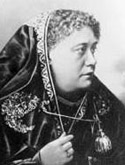

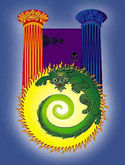
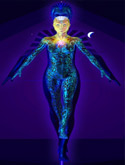

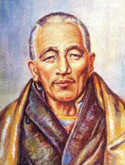
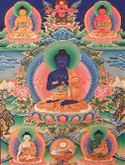
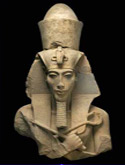
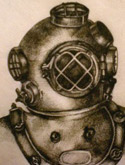





Phillip,
I am ever so grateful to have had your article about Herman Hesse brought to my attention.
Very informative and interesting article of the inner and outer man.